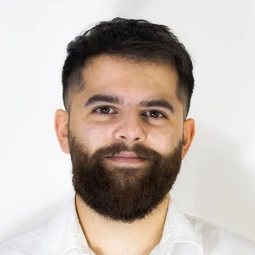In today's digital world, businesses face a growing number of cybersecurity threats. Cyberattacks are becoming more sophisticated and frequent, making it essential for businesses to take a proactive approach to security. One way to do this is by implementing Identity and Access Management (IAM) solutions. In this article, we will discuss the importance of IAM and its benefits in the digital world.

What is Identity and Access Management?
Identity and Access Management (IAM) is a framework of policies, processes, and technologies that manage digital identities and access to resources. IAM ensures that only authorized individuals have access to sensitive data and applications, thereby enhancing security and reducing the risk of data breaches. IAM includes several components, such as authentication, authorization, access control, and identity management.
The Need for IAM in Today's Digital World
The increasing digitization of businesses has led to an explosion of data, and with this, a growing need for stronger security measures. Data breaches can have serious consequences, including financial losses, reputational damage, and loss of customer trust. IAM is essential for businesses to protect their assets and mitigate the risks of cyberattacks.
Cyber Threats and the Importance of IAM
Cybersecurity threats are evolving and becoming more complex, and organizations must be prepared to respond to them. Hackers are constantly finding new ways to access data, and traditional security measures such as firewalls and antivirus software are no longer sufficient. IAM provides an additional layer of protection against cyber threats by controlling access to data and applications.
IAM Components and Their Role in Enhancing Security
IAM includes several components, each of which plays a crucial role in enhancing security.
Authentication
Authentication is the process of verifying the identity of a user. This process ensures that only authorized individuals have access to data and applications. IAM systems use a variety of authentication methods, including passwords, biometrics, and multi-factor authentication.
Authorization
Authorization is the process of granting access to resources based on the user's identity and role. Authorization ensures that users can only access the resources that they are authorized to access.
Access Control
Access control is the process of enforcing policies and rules that determine which users can access which resources. Access control helps organizations to protect sensitive data and ensure compliance with regulatory requirements.
Identity Management
Identity management is the process of creating, managing, and storing digital identities. IAM systems use identity management to ensure that only authorized individuals have access to resources.
Governance and Compliance
IAM is essential for ensuring compliance with regulatory requirements. IAM solutions provide organizations with the ability to manage user access to data and applications, maintain audit trails, and enforce policies and procedures. Compliance with regulations such as GDPR, HIPAA, and PCI-DSS can be challenging, but IAM can help organizations to meet their obligations.
The Benefits of IAM
IAM provides several benefits to organizations in the digital world:
- Enhanced Security: IAM provides an additional layer of security, reducing the risk of data breaches and cyber attacks.
- Improved Efficiency: IAM automates many processes, reducing the workload of IT staff and improving efficiency.
- Regulatory Compliance: IAM helps organizations to meet regulatory requirements and avoid costly penalties.
- Better User Experience: IAM systems can improve the user experience by providing single sign-on and self-service options.
Challenges in Implementing IAM
Implementing IAM can be challenging for organizations, particularly those with complex IT infrastructures. One of the biggest challenges is managing the complexity of user identities, which can be spread across multiple systems and applications. Another challenge is ensuring that IAM systems are integrated with existing IT systems and applications.
Best Practices for Implementing IAM
Implementing an effective IAM strategy requires careful planning and execution. Here are some best practices for implementing IAM:
- Conduct a Risk Assessment: Before implementing an IAM solution, it's essential to conduct a comprehensive risk assessment to identify potential security threats and vulnerabilities.
- Define Access Policies: Define access policies that outline who has access to what resources and under what conditions. Ensure that these policies align with the organization's overall security and compliance objectives.
- Implement Multi-Factor Authentication: Multi-factor authentication is a crucial component of any IAM solution. It requires users to provide additional verification factors such as a fingerprint, smart card, or one-time password, which makes it more difficult for unauthorized users to gain access.
- Monitor User Activity: Monitor user activity and review audit logs regularly to detect any unusual or suspicious activity that may indicate a security breach.
- Regularly Review and Update Access Policies: Regularly review and update access policies to ensure that they remain relevant and aligned with the organization's security and compliance objectives.
- Educate Users: Educate employees and customers about the importance of strong passwords, the risks of phishing, and other best practices for maintaining good security hygiene.
Conclusion
In today's digital world, identity and access management is more critical than ever. As organizations continue to embrace cloud computing, mobile devices, and other digital technologies, the need for effective IAM solutions will only grow. By implementing an effective IAM strategy, organizations can protect sensitive data, comply with regulations, and enhance their overall security posture.







Comments ( 0 )